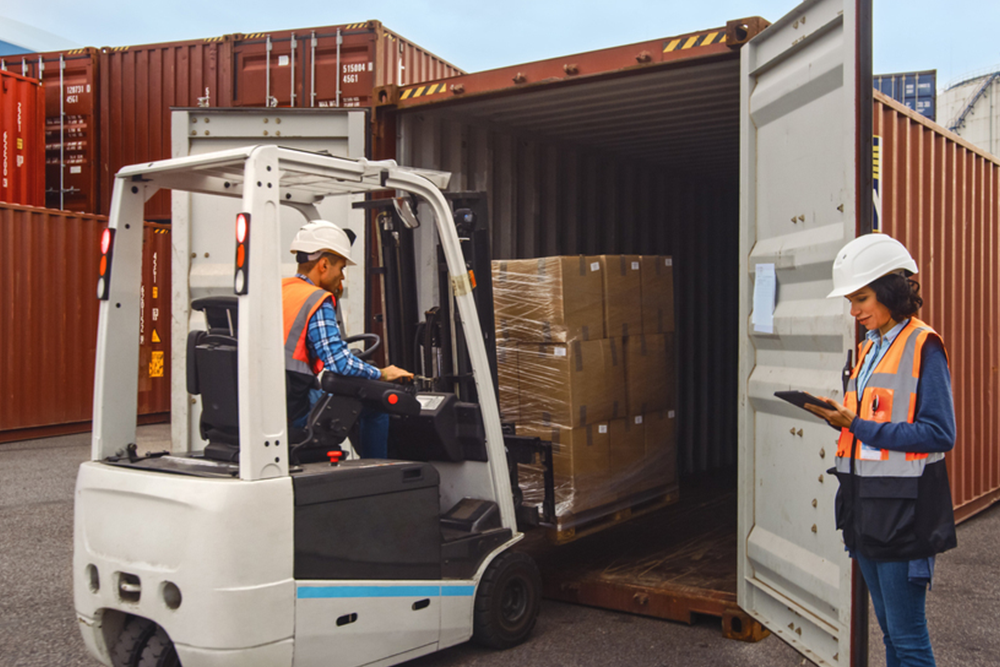How to Load a Container For IT to Arrive at ITS Destination
Loading a shipping container is a difficult and time-consuming operation that takes into account several elements in the international shipment of products. Even a few decades ago, loading and unloading were done by hand with sacks and barrels. Today, thanks to technological advancements and the economic growth of international trade, there is a wide range of equipment, tools, software, and process standardization that contribute to significant transportation cost reductions, time savings, and increased goods safety in ship container loading and unloading.
The loading and unloading process involves a variety of complicated tasks in the warehouse or cross-dock center, ensuring that the cargo is not damaged and that accidents are avoided as efficiently as possible for the workers involved.
A variety of factors are taken into account when loading and unloading a shipping container.
1. Select the Appropriate Container.
The proper container must be chosen according to the kind of load, ventilation, temperature, storage circumstances, and so on. The container must also be clean, devoid of odors, chemicals, broken welds, leaks, and weatherproof, and have fully functioning, firmly sealed doors.
2. Considerations During the Loading Process
The loading procedure is required to guarantee that the items arrive in excellent condition and that the unloading is effective. Proper spacing is a critical consideration for carriers while delivering products. Due to the potential for harm caused by inappropriate cargo utilization, this requires extensive preparation. Use shipping container bracing to make sure the items won’t bump against one another.
3. Abide by Your Packing List.
Taking the process of filling a shipping container for granted can lead to major issues since improper packing can result in loss or damage to the cargo. Any charge must be examined to ensure it is packed, tagged, and labeled correctly before it can be loaded.
Container Loading Inspection: Why Is It Necessary?
A comprehensive assessment of container loading methods is equally as critical as lab testing and line monitoring for detecting possible product dangers. In turn, a reliable product testing and inspection service recognizes the importance of goods protection, precise order filling, and regulatory documentation to an importer’s overall performance.
It’s easy to imagine the impact a container full of damaged items may have on your company. Aside from the financial, time, and product losses, there is also a cost to your brand’s reputation as a trustworthy provider. Given all of the variables involved in international transportation, the urge to cut corners on quality and safety is too tremendous to risk.
A high-quality inspection service has several advantages for your company. The following are some of the primary advantages:
-
Quality and Quantity Checks.
Individual goods should continue to be inspected for structural integrity. Before loading begins, an inspector can sample a tiny quantity for the final inspection. This is an extra precaution designed to identify faults that may have been overlooked between the production line and the loading zone.
-
Packaging Inspection
Packaging strength is critical to the product’s integrity. When an on-site inspector detects faulty, out-of-spec, or mislabeled packing before the product departs on its lengthy and cramped voyage, a firm can potentially save millions in damaged goods, return fees, and lost sales.
-
Verification of Loading Procedure
How concerned are busy loading workers about ‘fragile’ products? Are they treated with care, or are they considered simply another cargo to be dispatched as soon as possible? An on-site inspector will ensure that all staff participating in the loading process are aware of sensitive materials and can conduct sensitive loading responsibilities appropriately.
-
Cargo Container Quality Inspections
Perhaps it is the containers that are unfit for travel. Export containers must be extensively examined for damage, leaks, mold, bugs, rodents, and general material conditions. A qualified loading inspector will inspect every wall, lock, and seal.
Branding Manufacturing Services Provide Dependable And High-Quality Container Loading Inspection In China.
We are a quality control company, bringing together a group of experienced and deeply understanding people with an average of 10+ years in the quality control field, focusing on providing top-notch quality control, container inspection, product inspection, defect sorting, and factory audit-related services. Our container loading inspection guarantees that a supplier delivers the appropriate items in the proper quantities following the loading plans. Our quality control inspectors check packaging, materials, labels, and barcodes. Every detail is checked to ensure that excellent items are given to customers.
With our container loading inspection services, we have the expertise to carry out statistical sampling procedures to determine whether or not they meet internationally recognized standards. We assure you that we will never let our customers down by delivering broken or damaged merchandise. Our container inspection services provide several advantages that your organization will find beneficial. Client satisfaction is of the utmost importance to us, and we strive to provide the best services possible. It has aided us in developing a strong brand image among our competitors

